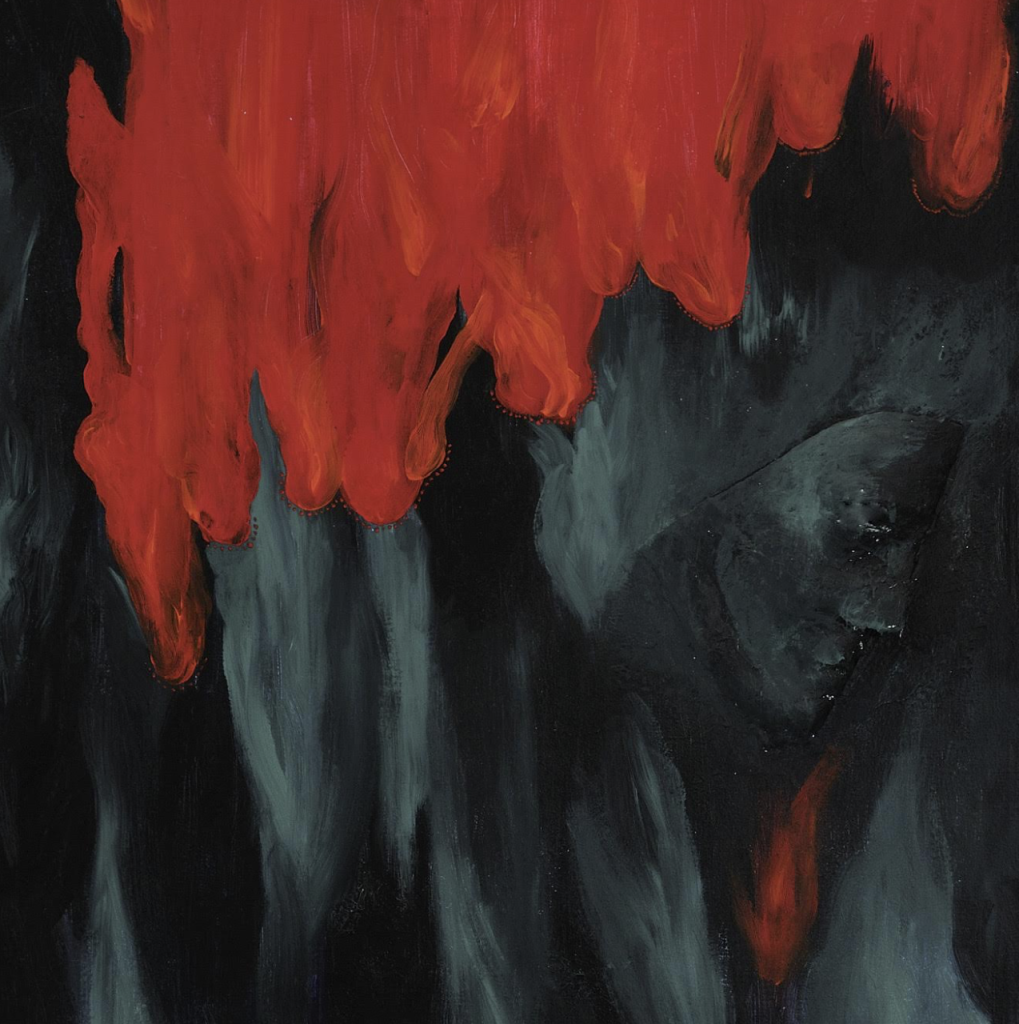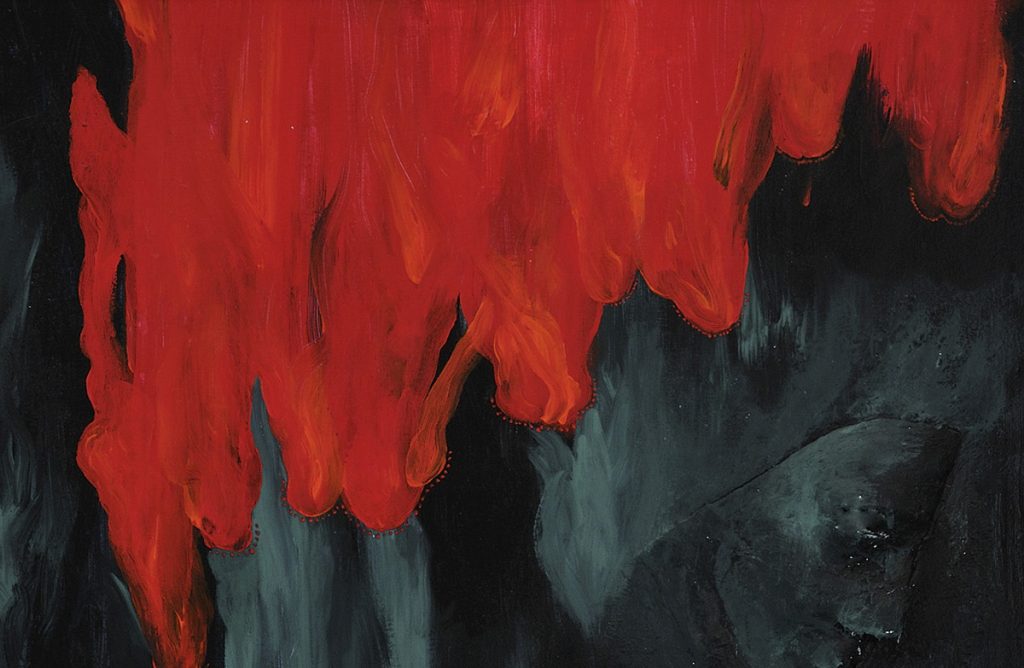Deborah K. Tash was born in 1949 and grew up in the Bay Area, a place that would shape her sensibilities as both a poet and a painter. She has always worked in two languages—the visual and the written—and both are stitched together by ancestry and spirit. Tash describes herself as a Mestiza, acknowledging the Mexican roots of her mother and the Celtic roots of her father. For her, this heritage is more than genealogy. It is about movement between worlds, about listening to myth, about respecting nature, and about finding the story that lingers in silence. Her art does not separate one influence from another. Instead, it holds them in tension and balance. Tash works where borders dissolve, where grief can wear the same face as beauty, and where the fragment is just as telling as the whole. Her practice continues to expand those spaces in quiet, deliberate ways.

Mask Series/Grief
Mask Series/Grief is one of those works that lands heavy the moment you look at it. At first glance, it is a collage—a mask affixed to the right side of an abstract acrylic painting. But the image lingers because of the way it refuses to sit quietly on the surface. The mask is not decorative. It is half of a man’s face, rendered in black and dark green, leaning into a background of flames. Those flames shift between red, green, and black, rising up in a slow, consuming motion. The entire work sits on the edge of expression and silence, echoing both the title and the weight of loss.
The piece tells us something about Tash’s way of approaching grief. She doesn’t simplify it. She doesn’t soften it with metaphor. Instead, she makes grief visual and tactile, something you can almost feel pressing against you. The mask itself seems both present and absent, like someone standing at the threshold of leaving. Its position—on the edge, off to the right—speaks to absence more than presence. What is missing becomes as important as what is seen.
The flames that move across the background don’t roar or explode. They rise in slow vertical lines, more like breath than fire. Yet the colors—black, green, and red—carry the heaviness of mourning. Black is the color of void. Green, often linked with nature or renewal, here turns dark, almost toxic. Red, the faintest but most piercing, signals both pain and life force. Together, the palette becomes a field of contradictions: death and vitality, silence and burning, permanence and collapse.
What makes this work compelling is the way it holds those contradictions without rushing to resolve them. Tash allows grief to remain ambiguous. She knows that grief is not only sadness but also memory, resistance, and even beauty in the persistence of what remains. The half-mask suggests the fractured way grief works. We never see the whole picture, never get the complete story. We live with what is partial, unfinished, broken, and yet it still demands to be carried.
Her decision to collage the mask rather than paint it directly into the canvas is also telling. The collaged object sits slightly apart, as if it never fully belongs to the space. That distance is part of the work’s power. It reads like a relic, something preserved and placed within the storm of emotion. It marks grief as an artifact—something solid but fragile, a remainder that refuses to disappear.
Placed in the context of Tash’s larger practice, Mask Series/Grief is a continuation of her concern with identity and spirit. Masks, in many cultures, carry dual purposes: concealment and revelation. They hide, but they also tell truths that bare faces cannot. In this work, the mask doesn’t disguise grief. Instead, it makes it visible. It reveals what otherwise would stay unspoken.
There’s also a ritual feel to the painting. The flames, the mask, the colors—they echo elements of ceremony, as if the painting is itself an altar. It’s not sentimental. It’s not about comforting the viewer. Instead, it insists on recognition: this is what grief looks like when it refuses to fade into the background.
The work’s dimensions—wider than tall, over a thousand pixels each way in its digital form—give it a sense of monumentality. Though it’s intimate in subject, it resists being small. Grief, Tash seems to say, is never small. Even when carried privately, it takes up space.
What remains after sitting with the work is a kind of quiet. The flames don’t consume the mask, and the mask doesn’t fully vanish into them. They coexist, uneasy but inseparable. That is the truth of grief. It doesn’t end cleanly. It becomes part of the landscape, something you learn to live with rather than conquer.
Mask Series/Grief shows Deborah K. Tash at her most unflinching—holding contradictions, honoring heritage, and refusing to let grief be pushed aside. It is art that speaks with restraint, but its weight is unmistakable.

